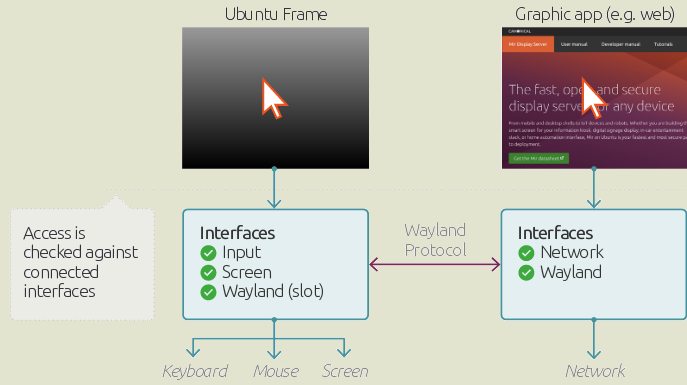Canonical introduced first edition of the shell Ubuntu Frame designed to create Internet kiosks, self-service terminals, information stands, digital signs, smart mirrors , industrial screens, IoT devices and other similar applications. The shell is calculated for the provision of a full-screen interface for one application and is based on using the MIR display server and Wayland protocol. Project operations distributed under the GPLv3 license. To download Prepared Packages in Snap format.
Ubuntu Frame can be used to run applications based on GTK, Qt, Flutter and SDL2, as well as Java database programs, HTML5 and ELECTRON . It is possible to start both applications collected with the support of Wayland and programs based on the X11 protocol ( is used xWayland).
To organize work in Ubuntu Frame with individual web pages or sites, the program Electron Wayland is developed with the implementation of a specialized full-screen Web- Browser, as well as the port of the WPE WebKit . To quickly prepare and deploy solutions based on Ubuntu Frame, it is proposed to use SNAP packages, with which isolation of start-up programs from the rest of the system is organized.

Ubuntu Frame envelope is adapted to work on top of the Ubuntu Core system environment, the compact version of the Ubuntu distribution unit supplied in the form of an indivisible monolithic image of the base system, in which the breakdown does not apply on separate DEB packets and use the mechanism of atomic update of the entire system. The Ubuntu Core components, including the basic system, Linux kernel, system superstructures and additional applications are supplied in SNAP format and are controlled by SNAPD tool. Components in SPAN format are isolated using AppARMOR and SECCOMP, which creates an additional line to protect the system in the event of a compromise of individual applications. The basic file system is mounted in read-only mode.